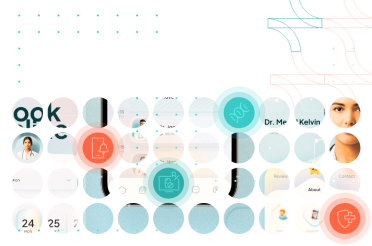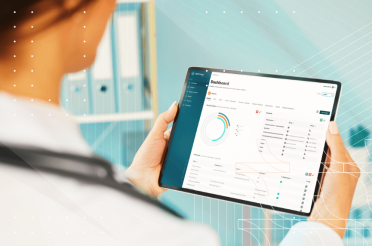The clinical research enterprise is at a crossroads. As we peer into the future of clinical research, the regulatory perspective shapes our understanding of this rapidly evolving landscape. Like an intricate puzzle, the myriad pieces, from clinical trials and patient recruitment to data protection, are coming together to form a new picture of clinical research operations.
Evolving landscape: overview of key changes in clinical research regulations
The clinical research industry operates within a highly regulated environment, with regulatory agencies standing as vigilant custodians. As the future of clinical trials takes shape, these agencies, including the European Medicines Agency, have been instrumental in directing transformations within the industry.
Navigating the regulatory waters
The primary purpose of regulatory agencies is to ensure the safeguarding of human rights, safety, and well-being of human subjects in clinical trials. These agencies have an essential role in steering changes in the way clinical research is conducted. Recent adaptations in regulatory frameworks reflect this ongoing commitment.
New paradigms for drug safety
They include the following:
- Tightening of protocols. Regulations nowadays require more stringent adherence to safety protocols and data accuracy, ensuring every clinical trial data point is validated and traceable. For instance, the U.S. Food and Drug Administration (FDA) recently implemented an electronic system, the Electronic Submissions Gateway, for all regulatory submissions, improving the traceability and accountability of data. This system ensures every clinical trial data point is validated and traceable.
- Increased transparency. There is a stronger focus on open disclosure to patients, caregivers, and the public about the drug development process, potential risks, benefits, and results of clinical trials. For example, pharmaceutical companies like Johnson & Johnson have pledged to increase transparency by publicly sharing their clinical data, thus giving everyone from researchers to patients a clearer picture of the potential risks, benefits, and results of clinical trials.
- Enhanced monitoring. More rigorous post-market surveillance is demanded for approved medical devices and drugs, allowing early detection and management of safety issues. For instance, the United States Food and Drug Administration (FDA) launched the Sentinel Initiative, which uses a variety of data sources, like electronic health records and insurance claims, to actively monitor the safety of marketed drugs and medical devices. This paradigm shift allows for early detection and management of safety issues.
Precision medicine: the future of clinical trial design
The current era is witnessing a paradigm shift towards precision medicine, necessitating a more individualised approach in developing medical devices and therapies.
The treatment approach is no longer ‘one-size-fits-all’, but rather tailored to individual patients, taking into account their genetic, environmental, and lifestyle factors. This shift has introduced new dimensions to clinical trial design, with implications for all clinical research stakeholders.

Become a leader in the evolving yield of clinical research.
Empower your clinical research with expert insights. Schedule a conversation with BGO Software and start your journey towards innovation.

Regulatory science: guiding the path to innovation
Regulatory science has emerged as the driving force behind these evolutions in clinical research. As the bridge between medical and biological research and the actual application of new therapies, it ensures the safe and effective implementation of innovations like genomics and personalised therapies.
Key aspects include:
- Harmonising guidelines. Regulatory science aims to create a common language and set of guidelines for conducting clinical research across countries and research institutions.
- Promoting ethical conduct. Ensuring all medical research adheres to ethical guidelines, especially regarding the treatment of human subjects, data privacy, and informed consent.
- Facilitating innovation. The field provides a critical framework for accommodating advancements while balancing the need for innovation with patient safety.
As we delve deeper into the future of clinical research, the evolving landscape paints a clear picture: regulatory bodies are constantly adapting and updating their protocols to respond to the rapid strides in medical and biological research.
The way forward is undoubtedly laden with challenges, but with regulatory science as the compass, the journey is made less arduous and more fruitful for all stakeholders involved.
Patient centricity: new regulatory considerations in participant recruitment and consent
Patient-centricity is no longer just a buzzword – it’s the pivotal core of the evolving landscape of clinical research. This is a revolution driven not only by a deeper appreciation of the patient’s role in medical advancement but also by significant regulatory changes.
The paradigm shift towards patient-centric regulations
The regulatory landscape has been adapting to encompass the importance of the patient in the clinical research process. This integration of patient-centric values within the context of regulatory compliance has been seen as a key step in realising a clinical research enterprise that prioritises patient welfare.
Regulatory revisions
Recent changes in related pharmaceutical regulations now underline the importance of protecting the rights, safety, and well-being of trial participants. For instance, the European Medicines Agency (EMA) has begun to involve patients directly in its decision-making processes, seeking their input on drug approval and other key issues.
The Food and Drug Administration (FDA) in the US has also initiated programs like Patient-Focused Drug Development (PFDD) meetings, where they invite patients to discuss their experiences with certain diseases and treatments.
Tailored guidelines
These new regulatory frameworks have paved the way for guidelines designed to safeguard patient interests, thereby catalysing a shift towards more empathetic and patient-oriented clinical research operations.
In the UK, the National Institute for Health and Care Excellence (NICE) now includes patient and public involvement (PPI) in its health technology assessment. This has resulted in guidelines that are sensitive to patient perspectives, experiences, and expectations, thus fostering a more empathetic and patient-oriented clinical research culture.
Furthermore, Health Canada, the federal department responsible for helping Canadians maintain and improve their health, has initiated the Regulatory Review of Drugs and Devices (R2D2) initiative, to engage with patients more actively in decisions about their care.
These examples illustrate the ongoing shift towards a more patient-centric approach within the regulatory environment for clinical research. The incorporation of patient perspectives into these processes is a testament to the growing importance of patient-centric values in the advancement of healthcare and pharmaceutical research.
Patient recruitment and consent: a new perspective
The patient-centric approach is also evident in the manner in which patient recruitment and clinical research participation are now viewed.
The updated regulations promote a more holistic and respectful engagement with potential trial participants:
- Focused recruitment. With a deeper understanding of the patients’ perspectives, clinical researchers can now formulate more efficient recruitment strategies that cater to the unique needs and preferences of the prospective participants. For example, many companies reach out to advocacy groups that are trusted in patient communities when trying to recruit people for a new trial. Additionally, digital media campaigns are also being increasingly employed during patient recruitment.
- Enhanced consent process. The emphasis on patient-centricity has ushered in improvements in the informed consent process. Regulatory guidelines now stress transparency, open dialogue, and patient comprehension, encouraging a more respectful, dignified consent process.
The ripple effect on clinical trials
The patient-centric regulatory transformation has not only modified the fundamental dynamics of patient recruitment and consent but has also created a ripple effect across various aspects of clinical trials.
It includes the following:
- Trial design. With patient experiences now at the forefront, clinical trial design is being revolutionised to cater to participant convenience, comfort, and preferences. A few companies have been leading the way in this regard, conducting trials that allow patients to participate from their homes using telehealth and mobile/local healthcare providers. An example of this is the collaboration between Novartis and Science 37 in conducting “site-less” trials using mobile technology. In these trials, data was collected remotely using wearable devices, enabling patients to participate without leaving their homes.
- Data collection. The need for patient comfort has initiated a shift in data collection processes, with a move towards minimally invasive procedures and the utilisation of wearable technology for remote monitoring. For instance, Apple’s Heart Study, in collaboration with Stanford Medicine, leveraged the Apple Watch’s heart rate sensor to collect data on irregular heart rhythms. This large-scale study not only demonstrated the potential of wearables in clinical research but also showed how such technology can enhance patient comfort and convenience, as participants could contribute to the study in their normal daily routines without any invasive procedures.
- Patient engagement. More than just participants, patients are now valued as partners in clinical research. Regulatory changes encourage ongoing communication and feedback throughout the trial process, promoting active patient engagement. Examples of this include the newly introduced patient-focused meetings conducted by the FDA and the new UK guidelines that emphasise patient involvement more heavily than we discussed earlier.
Patient-centricity is becoming the cornerstone of clinical research. Regulatory bodies are continually adapting to foster an environment that appreciates and respects the patient’s central role in advancing medical science. This is the future of clinical research—a future where every process is designed with the patient at heart.
Data protection: impact of GDPR and HIPAA on data management in clinical research
The digital revolution in the healthcare sector has profoundly impacted the realm of clinical research, ushering in an era of data-intensive studies. As we gather, share, and analyse clinical trial data on a scale never seen before, ensuring the protection and privacy of such data becomes paramount.
The enforcement of regulatory frameworks like the General Data Protection Regulation (GDPR) in Europe and the Health Insurance Portability and Accountability Act (HIPAA) in the United States has brought significant changes to data management in clinical research.
Understanding GDPR and HIPAA: setting the groundwork
GDPR and HIPAA are the pillars that uphold data protection in the clinical research industry. The GDPR, enforced in the European Union, aims to harmonise data privacy laws across the continent, protecting EU citizens from privacy and data breaches. On the other side of the Atlantic, HIPAA sets the standard for protecting sensitive patient data in the United States.
GDPR
The focus of GDPR is to return control to individuals over their personal data while unifying regulatory privacy and data protection laws within the EU. Key aspects of GDPR include the right to access, right to be forgotten, data portability, and privacy by design.
In the context of clinical trials, it affects the handling of sensitive patient data, consent requirements, and cross-border data transfers.
Large pharmaceutical companies, for instance, have an extensive data protection framework to align with GDPR. They ensure that every individual involved in a clinical trial has given explicit, informed consent for their data to be used, and that they have the ability to withdraw this consent at any time.
Furthermore, companies usually implement ‘privacy by design’ into their IT systems and procedures, meaning that data protection safeguards are in-built from the outset, not added in later. For example, they might use anonymization and pseudonymization techniques to protect patient identities during data analysis.
HIPAA
This act, effective in the US, safeguards medical information such as medical records and other identifiable health information. HIPAA compliance, which is mandatory for entities handling patient data, profoundly impacts how clinical research stakeholders manage electronic protected health information (ePHI) during clinical trials.
Compliance with HIPAA involves implementing numerous safeguards to protect electronic protected health information (ePHI). Secure servers and advanced encryption methods are often used to store and transmit patient data securely.
Access to ePHI is also strictly regulated, with procedures in place to ensure only authorised individuals have access to this sensitive information. This often involves multi-factor authentication processes and regular system audits to detect any unauthorised access or potential data breaches.
Under the Privacy Rule in HIPAA, healthcare entities must designate a privacy officer to oversee all ongoing activities related to the development, implementation, and maintenance of the entity’s privacy policies in compliance with HIPAA.
This officer is responsible for ensuring the organisation’s privacy policies align with HIPAA requirements and are regularly updated. Additionally, these entities must provide regular HIPAA training to all employees to ensure they understand their responsibilities when handling patient data.
Navigating GDPR and HIPAA: impact on clinical research
The implementation of GDPR and HIPAA has reshaped the handling and management of patient data in clinical research:
- Informed consent and data collection. Both GDPR and HIPAA underline the importance of obt aining informed consent before collecting personal health data. This requirement has led to a significant shift in patient recruitment strategies and the design of consent forms, with a clear focus on transparency and participant understanding.
- Data processing and management. Clinical research often involves the processing of large volumes of health data. Under GDPR and HIPAA, these processes must align with principles like data minimization, accuracy, storage limitation, and confidentiality. Clinical research stakeholders must ensure robust data protection measures during data collection, storage, transmission, and disposal.
- Cross-border data transfer. With multinational clinical trials becoming more common, transferring patient data across borders is often inevitable. However, stringent rules under GDPR and HIPAA mandate that such transfers must occur only under conditions that ensure an adequate level of data protection.
- Breach notification. In case of a data breach, GDPR and HIPAA require clinical research stakeholders to notify the affected individuals and the relevant authorities within a specified timeframe. The protocols for managing data breaches have, therefore, become an integral part of clinical research operations.
The consequences of non-compliance
Non-compliance with GDPR and HIPAA can lead to severe consequences for clinical research stakeholders, including hefty fines, reputational damage, and a loss of public trust. Hence, adherence to these regulations is not just about regulatory compliance but also about fostering a culture of respect for patient privacy and data security in the clinical research enterprise.

Improve your clinical research to deliver more patient-centric solutions.
Ready to dive deeper into clinical research innovations? Book your consultation with BGO Software today and unlock new possibilities
In 2021, a notable case involving Blackbaud Inc., a cloud computing provider, highlighted the potential repercussions of non-compliance with GDPR. After a data breach exposed the personal data of numerous individuals, including health information, Blackbaud was faced with multiple lawsuits in the United States and the United Kingdom.
The incident led not only to significant financial costs (Software giant Blackbaud has recently agreed to pay a $3 million fine) but also reputational damage, with several clients choosing to terminate their contracts due to concerns about data security. This instance showcases the high stakes of non-compliance with data privacy regulations in the context of clinical research.
The implications of GDPR and HIPAA on data management in clinical research are profound. As we continue to navigate the intricacies of these regulations, we must remember that their goal is to strike a balance between innovation in clinical trials and the privacy rights of individuals.
Through a nuanced understanding and effective implementation of these frameworks, we can ensure that the future of clinical research is not just data-driven but also ethically responsible and patient-centred.
Virtual trials and decentralised clinical studies: regulatory implications
The contemporary world is rapidly morphing into an advanced digital society. This seismic shift is echoed in the clinical research industry. A pronounced departure from the traditional clinical trial landscape, the emergence of virtual trials and decentralised clinical studies reflects this digital transformation.
With an increased focus on observational clinical studies, this evolution brings forth a new set of regulatory challenges and reshapes the paradigms of how we conduct clinical research.
The rise of virtual trials
Virtual trials, or remote trials, offer a new approach to conducting clinical research. This novel modality involves the use of digital health technologies to collect clinical trial data from participants remotely. However, with this innovative method come unique regulatory hurdles.
Patient recruitment and consent
Obtaining informed consent from trial participants in virtual settings necessitates the development of clear and user-friendly digital tools. Regulatory frameworks need to ensure these tools uphold the ethical standards of informed consent, protecting participant rights and understanding. For instance, Science 37’s NORA® technology uses video conferencing to obtain informed consent.
Data privacy
With virtual trials, the handling of large volumes of digital health data becomes an issue of paramount concern. Regulatory bodies such as the GDPR and HIPAA oversee the privacy and security of health information in clinical research, thus extending their scope to digital health data obtained from virtual trials.
Data protection is achieved by setting strict standards that involve implementing technical safeguards such as encryption, pseudonymisation, and secure data transmission protocols.
Additionally, clear privacy policies and guidelines are enforced, requiring the explicit consent of the patients for data collection and use. Regular audits and risk assessments further ensure compliance, while any breaches are expected to be promptly reported and addressed.
Monitoring and reporting of adverse events
Monitoring and reporting of adverse events in virtual trials involve the use of sophisticated digital health technologies, remote monitoring solutions, and safety protocols to ensure real-time tracking and prompt action.
On platforms such as Medidata’s Rave eCOA (Electronic Clinical Outcome Assessment), digital tools are used to record, assess, and report any adverse events. Participants can record symptoms directly through a digital interface, such as a mobile application or a wearable device, thus facilitating real-time self-reporting.
Critical elements to monitor include sudden changes in participants’ vital signs, unexpected symptoms, severe side effects, or any event that may be indicative of harm or potential harm to the participant. Data analysts and safety monitoring boards review this data continuously, allowing for rapid response and intervention if necessary.
Regulations also require maintaining an audit trail of all these adverse events and interventions, supporting transparency, reproducibility, and accountability in these virtual trials. These measures ensure that patient safety remains at the forefront, even when trials are conducted remotely.
It will be no easy feat honing regulatory frameworks to make them appropriate to the realities of contemporary clinical research, such as virtual trials, but leaning on intense collaboration among stakeholders, it is conceivable that regulations can be adapted such that they ensure patient safety and enable researchers to make the most out of the opportunities of the 21st century.
The shift towards decentralised clinical studies
Decentralised clinical studies or trials, often conducted at multiple sites or even at patients’ homes, present unique regulatory implications.
For example, the COVID-19 vaccines were developed in trials that were decentralised, i.e., taking place in multiple locations at the same time.
They include the following:
- Multi-site coordination. Decentralised studies involve many moving parts (the investigators, the collected data, etc.) across various locations that require coordination. To ensure the integrity and standardisation of these studies, robust regulations must be put in place to guide the harmonisation of protocols and procedures.
- Data integration. Clinical data collected from multiple sources needs to be integrated seamlessly to achieve conclusive results. Regulatory bodies are faced with the task of formulating guidelines that ensure the quality and integrity of this integrated data. One example is the Electronic Health Records for Clinical Research (EHR4CR) project, where data from diverse sources was harmonised and integrated through unified technological platforms.
- Patient safety. With patient-centric approaches in decentralised studies, regulatory agencies are required to enhance protection measures, ensuring the same level of patient safety as in conventional trials. For instance, Medable’s TeleVisit mobile application allows real-time video visits between patients and clinicians, enabling immediate communication about any adverse events or concerns.
Contract research organisations, pharmaceutical companies, and clinical investigators are increasingly faced with the task of complying with these evolving regulations. The aim is to maintain the highest standards of quality and integrity in these novel trial settings while promoting innovation. It is clear that the rules of engagement in the future of clinical research are changing.
However, with strong, adaptable regulatory systems in place, the transition towards virtual trials and decentralised clinical studies will ultimately yield more efficient, patient-centred, and globally scalable research models.
The future of regulatory compliance in clinical research: predicted trends and their implications
A multitude of regulatory trends present themselves when we consider what the future of clinical research will probably look like. These trends, both challenging and exciting, promise to reshape the landscape of the clinical research industry. Let’s delve into what we can anticipate in the future of regulatory compliance in clinical research.
Precision medicine: reimagining regulatory pathways
One of the most transformative shifts in the clinical research industry has been the move towards precision medicine, as we briefly discussed earlier. Let’s consider this trend in a bit more detail now.
This paradigm shift in the approach to disease treatment and prevention takes individual variability in genes, environment, and lifestyle into account. As we transition from a ‘one-size-fits-all’ approach, this move demands a reconsideration of traditional regulatory pathways.
Adapting regulations
Regulatory bodies are expected to revamp the existing guidelines to facilitate the development and approval of personalised therapies and medical devices. This includes strategies for designing and conducting clinical trials that can handle the complexity and unique aspects of precision medicine.
Regulatory bodies will probably need to establish expedited or accelerated pathways specifically designed for personalised therapies and medical devices. These pathways would prioritise the review and approval of innovative treatments that address unmet medical needs and demonstrate significant clinical benefit, even with smaller patient populations.
New approaches to data
Precision medicine involves managing large and diverse data sets. Therefore, we may see new regulatory strategies concerning data collection, management, and protection to ensure privacy while enabling meaningful analysis.
For instance, it is certain that regulation of the use of AI in clinical research and data analysis will be necessary if we want this new technology to have wide-spread adoption.
Observational trials: greater emphasis on real-world data
With the explosion of real-world data, the reliance on observational trials has seen a significant increase. The observational clinical study, unlike controlled clinical trials, does not intervene in the study participants’ care and instead observes the outcomes in a real-world setting.
It includes:
- Guidance on ethical considerations. We can anticipate more extensive guidelines on the ethical considerations of conducting observational studies, ensuring patient privacy and data integrity, e.g., by implementing strict data anonymization techniques to protect patient identities and establishing protocols for data storage and security.
- Quality standards and methodologies. As observational trials rise, so does the need for robust methodologies to ensure the validity and reliability of results. We foresee the establishment of enhanced quality standards, audit methodologies, and data management practices tailored for these types of studies. These methodologies could involve regular audits of data collection processes, source data verification, and validation of study findings. Audits may also focus on assessing compliance with ethical guidelines and regulatory requirements.
Global convergence of regulations
Lastly, the globalisation of clinical research necessitates a convergence of regulations across regions.
The goal is to foster better collaborations among international clinical research stakeholders and harmonise practices across different regions:
- Harmonisation of standards. The future could see a greater push for the harmonisation of clinical trial standards across countries. This can help ensure consistent quality and ethical standards and ease the conduct of multinational clinical studies.
- Global collaborations. The convergence of regulations could potentially spur global collaborations, paving the way for large-scale, multinational clinical trials. Examples could include, as discussed already, not only the COVID-19 vaccines, but also trials related to HIV/AIDS and oncological diseases. This collaboration could advance medical science at an unprecedented rate, unlocking new therapies and treatments for patients worldwide.
The future of clinical research stands to be as dynamic and diverse as the industry itself. As we venture into the future, navigating these trends will be pivotal to continuing the advancement of clinical research in a way that is ethical, innovative, and patient-centred.

Whether you’re a startup, a Fortune 100 company or a government organisation, our team can deliver a solution that works for you.
BGO Software
______________________________________________________________________
References:
- Tenti E, Simonetti G, Bochicchio MT, Martinelli G. Main changes in European Clinical Trials Regulation (No 536/2014). Contemp Clin Trials Commun. 2018 May 17;11:99-101. doi: 10.1016/j.conctc.2018.05.014. PMID: 30003173; PMCID: PMC6039537.
- Algorri M, Cauchon NS, Christian T, O’Connell C, Vaidya P. Patient-Centric Product Development: A Summary of Select Regulatory CMC and Device Considerations. J Pharm Sci. 2023 Apr;112(4):922-936. doi: 10.1016/j.xphs.2023.01.029. Epub 2023 Feb 3. PMID: 36739904.
- Santa-Ana-Tellez Y, Lagerwaard B, de Jong AJ, Gardarsdottir H, Grobbee DE, Hawkins K, Heath M, Zuidgeest MGP; Trials@Home Consortium. Decentralised, patient-centric, site-less, virtual, and digital clinical trials? From confusion to consensus. Drug Discov Today. 2023 Apr;28(4):103520. doi: 10.1016/j.drudis.2023.103520. Epub 2023 Feb 6. PMID: 36754144.
- Chico V. The impact of the General Data Protection Regulation on health research. Br Med Bull. 2018 Dec 1;128(1):109-118. doi: 10.1093/bmb/ldy038. PMID: 30445448.
- https://www.fda.gov/industry/electronic-submissions-gateway
- https://www.sentinelinitiative.org/
- https://www.nice.org.uk/about/nice-communities/nice-and-the-public/public-involvement/public-involvement-programme/patient-public-involvement-policy
- https://www.novartis.com/news/media-releases/novartis-expands-alliance-science-37-advance-virtual-clinical-trials-program
- https://med.stanford.edu/appleheartstudy.html
- https://www.fda.gov/industry/prescription-drug-user-fee-amendments/fda-led-patient-focused-drug-development-pfdd-public-meetings#:~:text=FDA%20recognizes%20the%20value%20of,Voice%20of%20the%20Patient%20report.
- Aspen Am. Ins. Co. v. Blackbaud, Inc., 3:22-CV-44 JD (N.D. Ind. May. 31, 2023) – https://casetext.com/case/aspen-am-ins-co-v-blackbaud-inc-1
- https://www.science37.com/Company/News/Science-37-sup-reg%3B-sup-and-Boehringer-Ingelheim-Initiate-a-Collaborative-Partnership-to-Accelera
- https://www.medidata.com/en/clinical-trial-products/patient-centric-clinical-trials/ecoa/
- https://www.imi.europa.eu/projects-results/project-factsheets/ehr4cr
- https://www.medable.com/tags/televisit
- https://gdpr-info.eu/











